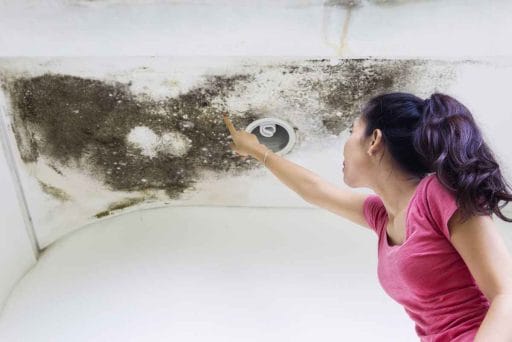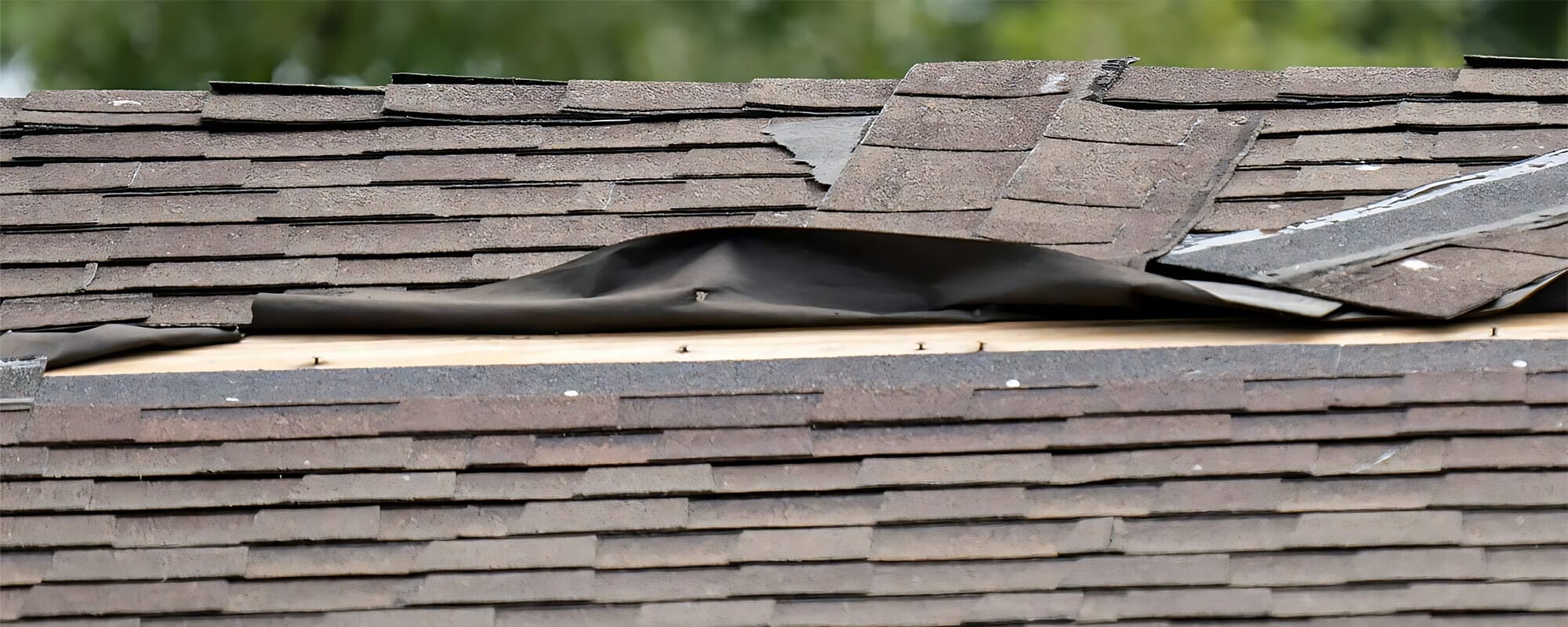After a week of storms, we’re usually happy to see the clouds part and the sun shine through. But remember that those storms could have caused significant damage to your roof – from either hail or high winds. The roof may have bang-ups, loose shingles, or spots of missing asphalt. If the roof is old or you suspect it’s got some issues, look out for all the possible signs of damage that would require the cost of a new roof.

The Two Major Ways Wind Damages Your Roof
Damage Due to Debris
During natural disasters, the wind isn’t the only thing you should be worried about. Wind can also carry debris such as branches, light outdoor furniture, and other objects. While your roof may be able to withstand the wind, handling impact from debris is another story. If your roof is hit by flying debris carried by strong winds, it’s very likely to suffer damage.
Damage Due to Wind Intensity
Tornadoes with winds of 73 to 112 mph are considered “Moderate Damage”, and can peel off your roof’s surface, as well. According to the National Hurricane Center, a Category 1 (74 to 95 mph) hurricane can cause damage to the shingles and siding. You can imagine the damage a Category 5 (more than 157 mph) hurricane can do. Damage is likely if your home is in the path of a Category 1 to 5 hurricane or is subject to very strong gusts during a bad storm or tornado event.
What Damage Can Occur From Strong Winds?
Inspecting your property on your own should only be done if it is safe to do so. Check for any downed or exposed wires before climbing up on a ladder or inspecting your property further. Be mindful of any debris or loose tree branches that could create an unsafe environment as you walk the property. If you suspect damage but don’t feel safe inspecting your roof, please call a professional roofing contractor, and they can do it for you.
Here are some things to look for as you assess damage to your roof and home’s exterior after high winds.
Leaky Roof

Probably the easiest damage to look for on your own is signs of a leaky roof. This is because you can search for this damage on the inside of your house. A leaky roof will show itself by way of wet spots or dripping water on the ceiling. Check your top-floor ceilings or attic floor, if you can, for any wet spots. This would indicate that the wind or some flying debris has done some damage to your shingles or roof.
Missing, Lifting, or Curling Shingles
There can be different levels of roof damage depending on how strong the wind was. Take a look up towards the roof, or get on a ladder if safe to do so, and take a peek at your shingles. You’ll want to look for missing, lifting, or curling shingles. Missing shingles were blown right off your roof because they were too loose, or the wind was just that strong.
Curling shingles are not as obvious to spot as missing shingles, obviously but are usually around the edges, corners, or near the flashing. Shingles that are curling are no longer protecting your roof from leaks and must be replaced. Lastly, lifting shingles is going to need a professional inspection to spot. This is where the shingles have loosened near the nails, which in turn has likely broken the sealants between them and can cause leaks.
Gutters
Spotting damage to your gutters should be pretty noticeable. You can quickly identify if any gutters have loosened, dented, or fallen off. But, there is a way the gutters can tell you about any accrued roof damage as well. What you find in your gutters can be a sign of roof damage. If you can see in your gutters, safely of course, and you see numerous granules from your shingles in the gutter, you likely have damage.
Contact A Professional Roofer
If you’re worried that your roof, soft, or fascia was damaged by high winds, call MHI Roofing for a free inspection. Our team of experts will assess the damage and help you decide what to do next!

